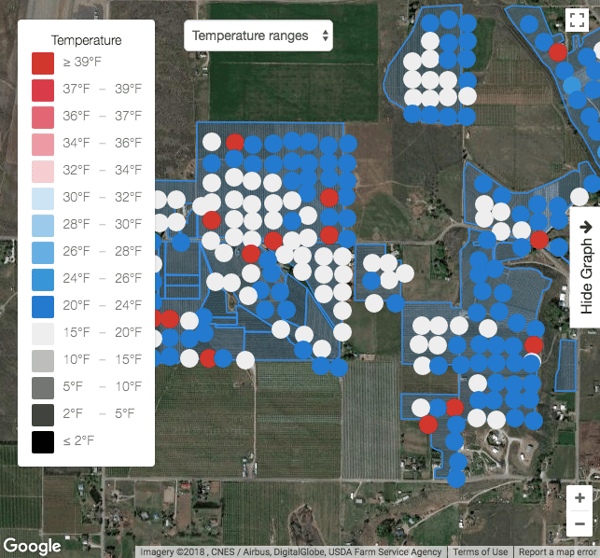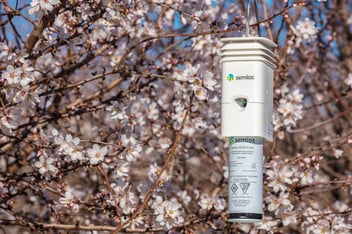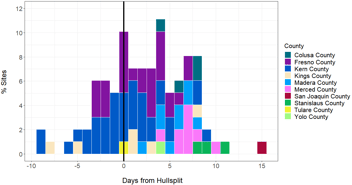.jpg?width=1350&name=_MG_4127%20(1).jpg)
In-canopy weather stations and sensors are steadily growing in popularity across Washington. Thanks to new advances in agriculture technology, growers can now access in-orchard weather stations and sensors that were previously either unavailable, or unaffordable.
What is a microclimate? A set of very-localized atmospheric conditions (temperature, air pressure, humidity, etc.) that can vary slightly, or substantially from the conditions of the surrounding area.
How Your Crop Benefits
Efficient evaporative cooling and irrigation practices
Micro-climate conditions can vary significantly from one acre to the next, even over homogeneous and contiguous crops. With in-canopy weather stations, you’re able to take a more targeted and efficient approach to irrigation and cooling practices because you’ll know exactly where climatic variation is occurring in your orchard.
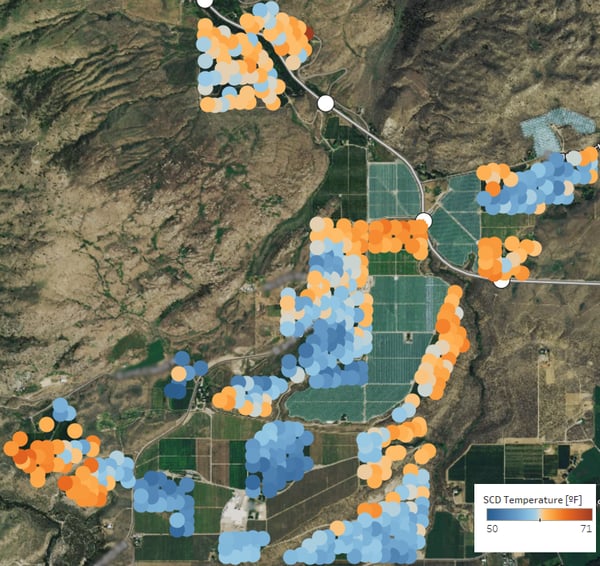
Accurate degree-day reporting for effective spray timing
The graph below shows the difference between in-canopy weather stations and the nearest public station 1.7 miles away. By August, the degree-day accumulation differs by more than seven to ten calendar days.
If you are timing your sprays to degree-day accumulation using regional weather data, you risk missing optimal application windows which could lead to needing additional applications throughout the season for adequate coverage. In-canopy weather stations allow for more precise timing of applications for greater impact.
Degree days: In-canopy vs. nearest public station 1.7 miles away
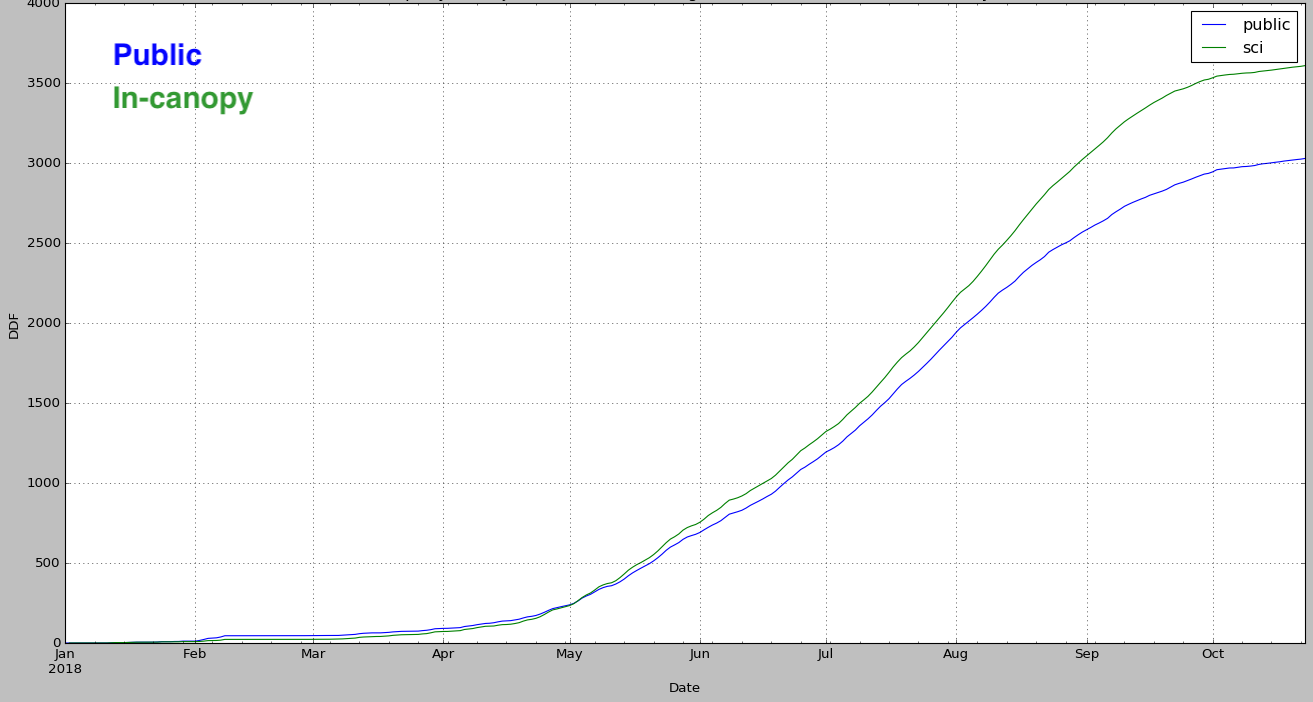
The next graph shows the calendar-day difference in codling moth degree-day accumulation between an in-canopy station and a regional public station located 2.4 miles away. The red dotted line at zero would be perfect agreement in degree-day accumulation between the two stations.
Degree day accumulation timing difference between on-site data and regional public data 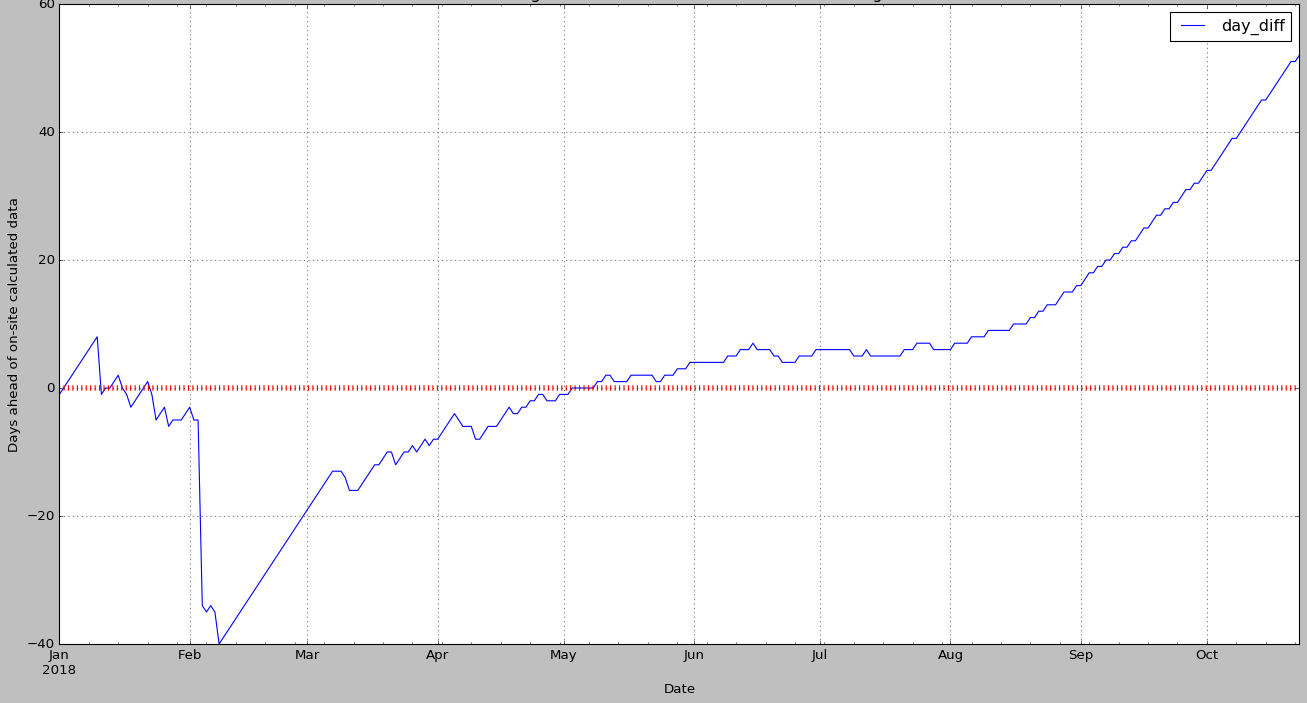
These kinds of effects are not picked up by public weather stations that are generally found outside of the crop and in the open.
Better disease risk management
Tree diseases thrive in warm, humid weather. To make things even more complicated, symptoms of diseases are often not visible until days or weeks after initial infection events. This makes prevention a challenge.
In the next graph, you can see a significant difference in humidity levels between the closest regional or public station and the in-canopy weather station. Without precise in-canopy weather data, you could underestimate the disease risk facing your crop and neglect to take the proactive measures to mitigate it. In-canopy weather stations and sensors allow you to stay ahead of disease risk in your crop and help you target the exact locations where the threat is greatest.
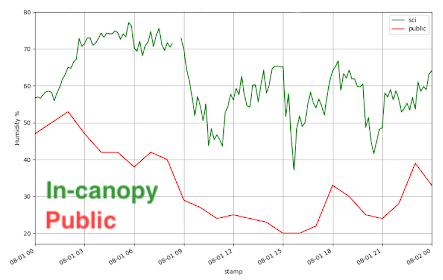
Effective frost risk management
To manage frost effectively a specific understanding of the type of frost you are dealing with is essential.
- Is your orchard experiencing radiation or advection cooling?
- A positive or negative inversion?
- What are the implication of the frost's timing, location, and severity?
Temperature map based on in-canopy weather station data
